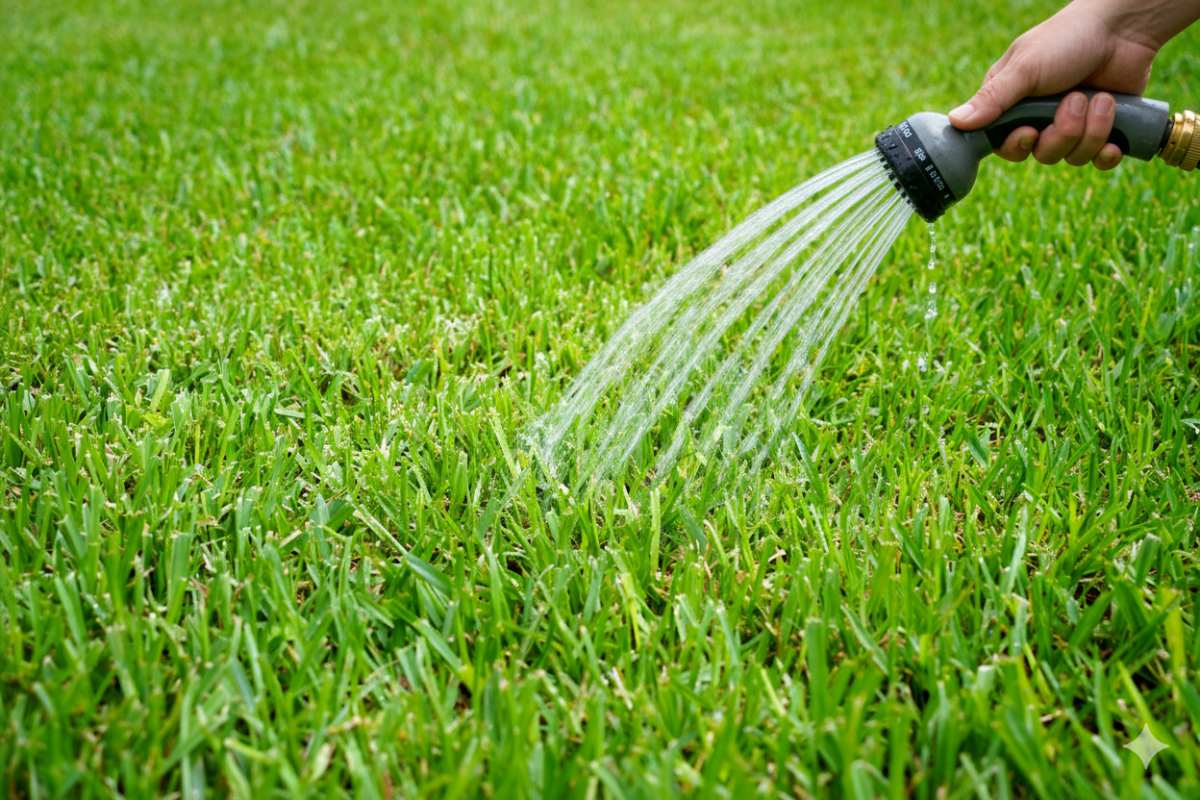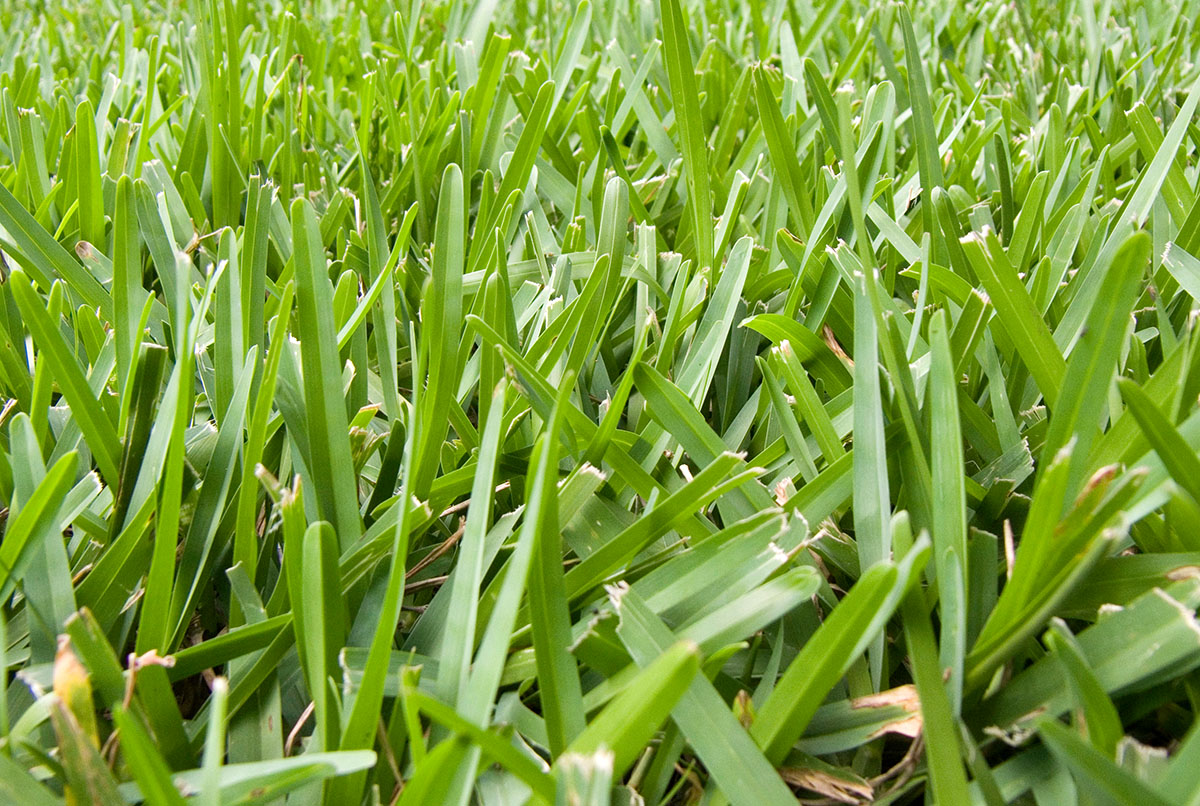
Keeping your St. Augustinegrass lush and vibrant can be a breeze with the right care. This popular lawn choice thrives in warm climates, but requires about 1 inch of water per week to maintain its healthy green color.
Understanding the watering needs of St. Augustinegrass can help ensure your lawn remains beautiful and well-maintained. Let’s dive into the details of proper watering practices to keep your lawn thriving.
How Much to Water St. Augustinegrass by Season

St. Augustinegrass is a popular warm-season turfgrass that withstands most of what a typical Southern yard can throw at it: partial shade, heat, humidity, and salt (in coastal regions). But it has only moderate tolerance to drought. So one of the keys to a healthy St. Augustine lawn is consistent and adequate watering.
Here’s the recommended watering schedule for St. Augustinegrass based on seasonal changes:
Spring (March to May)
In the spring, St. Augustinegrass starts to wake up from dormancy and begins to green up. Water your lawn once per week, or twice a week in sandy soil. Moisten the soil to a depth of 6 inches, which generally takes about 1 inch of water weekly, including rainfall.
Pro Tip: Watch for signs that your lawn needs watering, like a bluish-gray color or footprint impressions that don’t spring back, to conserve water and reduce your water bill.
Summer (June to August)
Summer is when St. Augustinegrass grows the most, so it needs more (and more frequent) watering because of the heat and increased evaporation. Water your lawn twice a week (3 times per week in sandy soil), applying about 1 to 1.5 inches of water each week, including rainfall.
Water early in the morning, before 9 a.m., to cut down on evaporation and avoid fungal diseases.
Pro Tip: Keep an eye out for drought stress, especially during hot spells, but be careful not to overwater either. Overwatering St. Augustinegrass increases the risk of thatch buildup, which often increases the risk of insect issues and fungal disease. If you see puddles in the lawn or the ground feels spongy, this may be a sign of overwatering your lawn.
See Related: How Often to Water Grass in Summer
Fall (September to November)
As temperatures cool down in the fall, St. Augustinegrass growth slows. Reduce watering to once or twice a week, ensuring the grass receives about 1 inch of water per week, including rainfall. Gradually reduce watering as temperatures drop and the grass growth slows.
See Related: How to Water Your Lawn in Fall and Winter
Winter (December to February)
St. Augustinegrass typically goes dormant in the winter and requires minimal watering. Water with about 1/2 inch of water every 3 to 4 weeks, or more frequently during extended dry periods. Watch for signs of dehydration, such as brown patches, and adjust watering accordingly.
Effective Watering Tips for St. Augustinegrass

Knowing when to water your St. Augustinegrass is just the beginning. To truly master lawn irrigation, check out these essential tips:
- Water deeply and infrequently: Apply 1/2 to 3/4 inch of water per session to encourage deep root growth. This helps the grass become more drought-tolerant.
- Monitor for drought stress: Water only when you notice signs of drought stress, like a bluish-gray color, folded leaf blades, or visible footprints.
- Best time to water: Water early in the morning, before 9 a.m., to reduce evaporation and prevent fungal diseases. Avoid late afternoon or evening watering.
- Ensure uniform coverage: Check your irrigation system regularly for even water distribution. Use straight-sided cans to measure water output (called the “catch can test”) and adjust sprinklers as needed.
- Ensure uniform coverage: Check your irrigation system regularly for even water distribution. Use straight-sided cans to measure water output (called the “catch can test”) and adjust sprinklers as needed.
- Adjust for soil type: Sandy soils may need more frequent watering, while clay soils retain moisture longer. Adjust your watering schedule accordingly.
- Consider shade: Areas with more shade or tree cover may need less water. Adjust watering zones to prevent overwatering these areas.
- Follow local watering restrictions: Adhere to local guidelines to conserve water, as watering restrictions are common in Florida and other Southern states. Check your local water authority’s website for easy-to-follow seasonal guidelines.
See Related:
Let Experts Handle Your St. Augustine Lawn
Maintaining the right watering schedule for St. Augustinegrass is crucial for a thriving and healthy lawn. But remember, proper watering is just one part of lawn care, so combine it with other maintenance practices for the best results.
Want the best care for your lawn? Let local LawnStarter lawn care pros handle all your lawn care needs. With expert help, you’ll have a gorgeous, lush lawn in no time.
Read Next:
Sources:
- “AgriLife Extension St. Augustine Guides Available Online.” By Gabe Saldana, AgriLife marketing and communications strategist. Agrilife Today.
- “Maintaining St. Augustinegrass Lawns.” By David Chalmers, associate professor and Extension turfgrass specialist, James McAfee, associate professor and Extension turfgrass specialist, and Roger Havlak, Extension program specialist – turfgrass and water management. Texas A&M University.
- “St. Augustinegrass Lawn Maintenance Calendar.” By turfgrass experts Grady Miller, Matt Martin, Jim Kerns, Rick Brandenburg, Terri Billeisen, and Fred Yelverton. North Carolina State University.
- “St. Augustinegrass Yearly Maintenance Program.” By Trent C. Hale, former Extension turfgrass specialist, and Chuck Burgess, former HGIC horticulture Extension agent. Clemson University.
Main Image: Watering St. Augustinegrass. Photo Credit: Jennifer / Adobe Stock